Discover the captivating world of ioras, small and colorful passerine birds native to South and Southeast Asia. With their vibrant plumage and melodic songs, ioras enchant birdwatchers and nature enthusiasts alike.
This exploration delves into these enigmatic avian creatures’ taxonomy, habitat, behavior, and conservation status.
From the intricate courtship rituals to their agile foraging techniques in forest canopies, ioras offer a fascinating glimpse into the diversity of avian life in tropical ecosystems.
Join us on a journey to uncover the secrets of ioras and gain a deeper appreciation for these charming birds and their vital role in the ecosystems they inhabit.
Taxonomy and Classification of Ioras
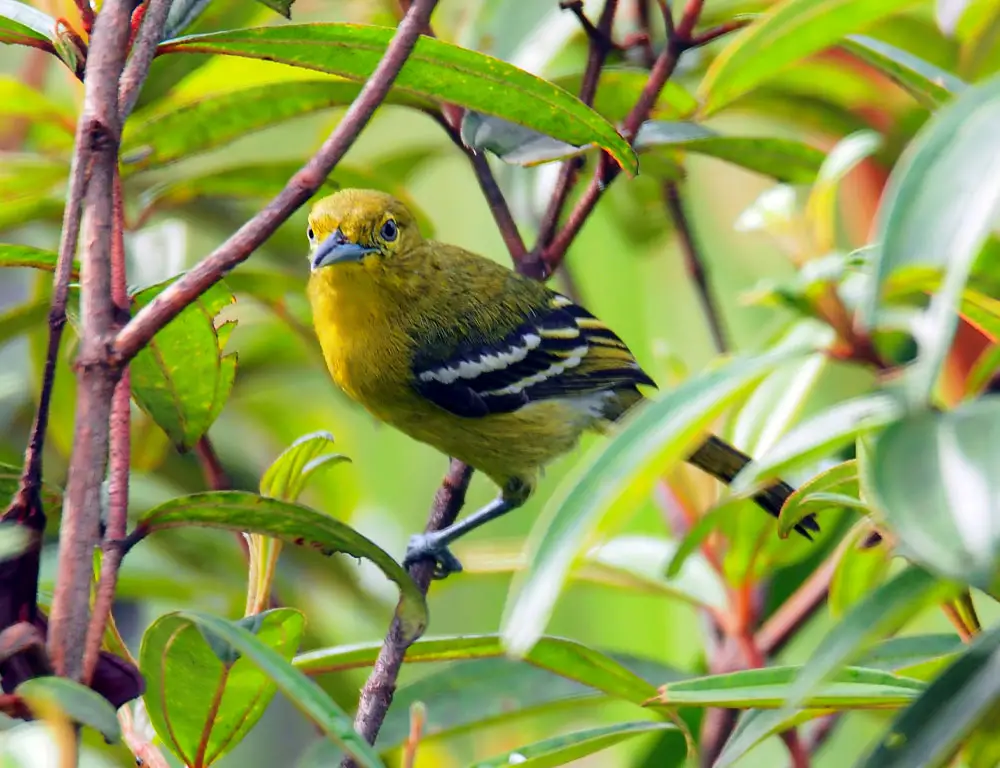
Ioras belong to the family Aegithinidae, a small family of passerine birds. Within this family, ioras are classified under the genus Aegithina.
Taxonomically, they are placed within the order Passeriformes, which encompasses over half of all bird species and includes perching birds with diverse feeding habits and ecological roles.
Here is the taxonomy and classification of ioras at various levels:
Kingdom
Animalia (Animals) – like all animals, Ioras belong to the kingdom Animalia, which comprises multicellular, eukaryotic organisms that are heterotrophic (obtain nutrients by consuming other organisms).
Phylum
Chordata (Chordates) – Ioras, like all birds, belong to the phylum Chordata, characterized by the presence of a notochord, a dorsal nerve cord, and pharyngeal slits at some stage of their development.
Class
Aves (Birds) – Ioras are members of the Aves class, including birds. Birds are characterized by feathers, a beak or bill, a lightweight skeleton, and the ability to lay hard-shelled eggs.
Order
Passeriformes (Passerines) – Ioras belong to the order Passeriformes, the most significant bird order and includes more than half of all bird species. Passerines are characterized by three forward-facing toes and one backward-facing toe, allowing them to perch effectively.
Family
Aegithinidae (Ioras) comprise Aegithinidae, a small family of passerine birds found in South and Southeast Asia.
Genus
Aegithina – Ioras are classified under the genus Aegithina, which includes several species of ioras.
Species
Within the genus Aegithina, there are currently four recognized species of ioras:
- Common Iora (Aegithina tiphia)
- Marshall’s Iora (Aegithina nigrolutea)
- Green Iora (Aegithina viridissima)
- Great Iora (Aegithina lafresnayei)
Habitat and Distribution of Ioras
The habitat and distribution of ioras vary depending on the species, but generally, ioras are found in forested or wooded habitats across South and Southeast Asia.
Here’s a breakdown of their habitat and distribution:
Common Iora (Aegithina tiphia)
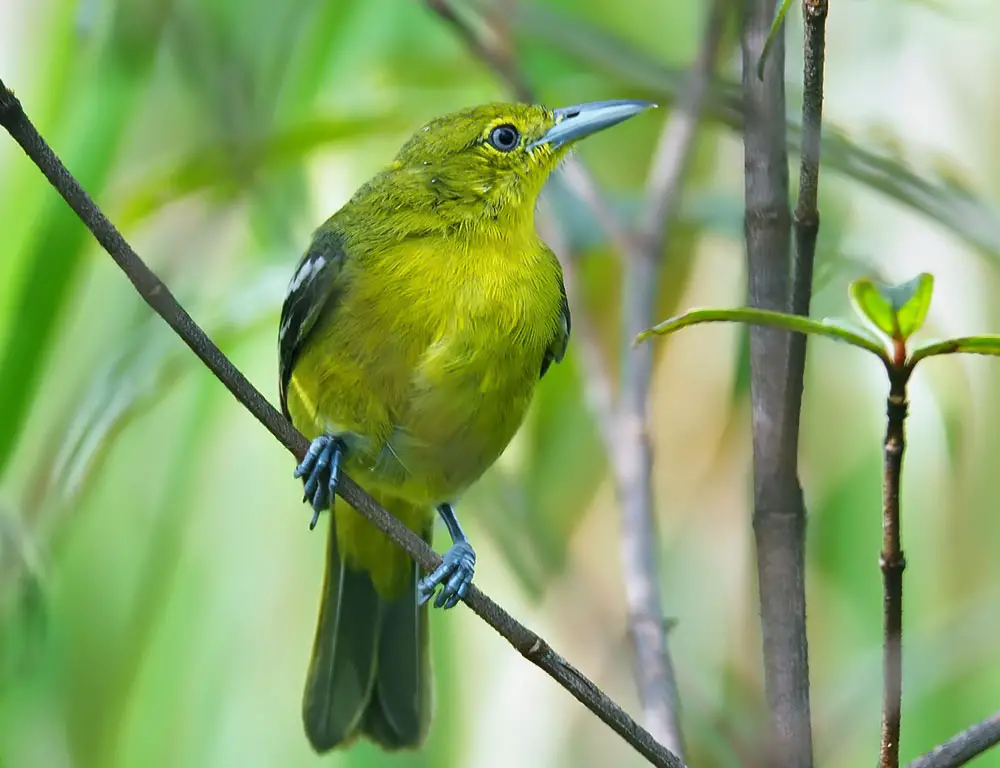
- Habitat: Common ioras inhabit various habitats including open woodlands, forests, forest edges, and gardens. They are adaptable and can also be found in urban and suburban areas.
- Distribution: Found across the Indian subcontinent, including India, Nepal, Bhutan, Bangladesh, and Sri Lanka. They also occur in Southeast Asian countries such as Myanmar, Thailand, Laos, Cambodia, Vietnam, Malaysia, Indonesia, and the Philippines.
Marshall’s Iora (Aegithina nigrolutea)
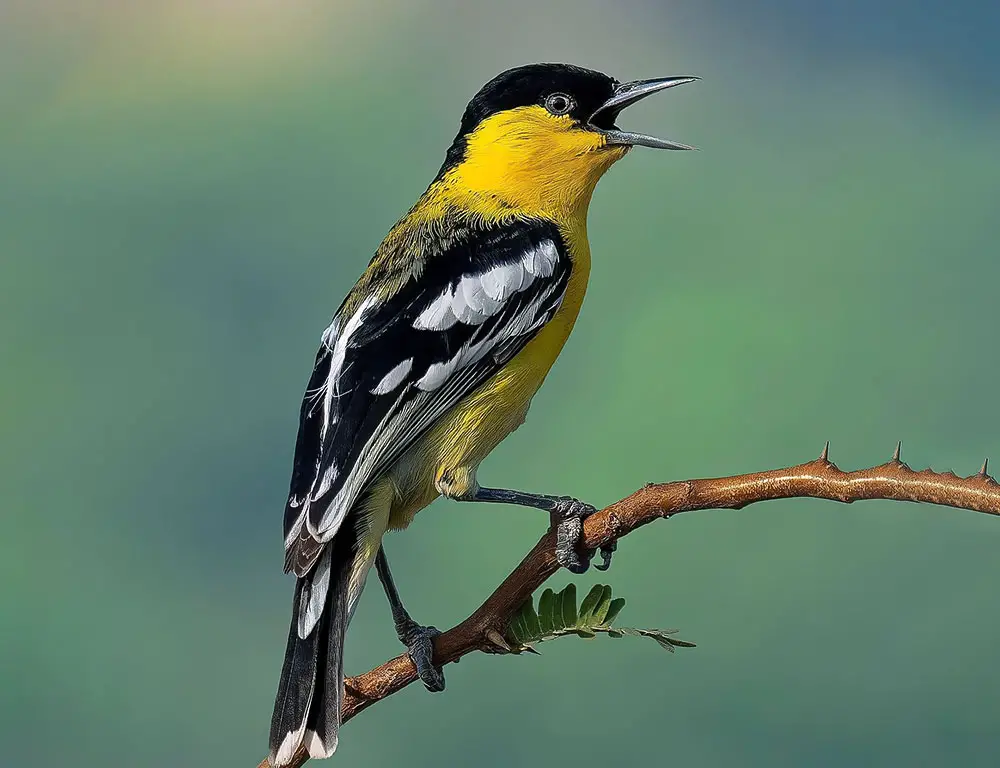
- Habitat: Like the common iora, Marshall’s ioras inhabit various wooded habitats, including forests, forest edges, and gardens.
- Distribution: Restricted to parts of India and Sri Lanka, particularly in the southern regions.
Green Iora (Aegithina viridissima)
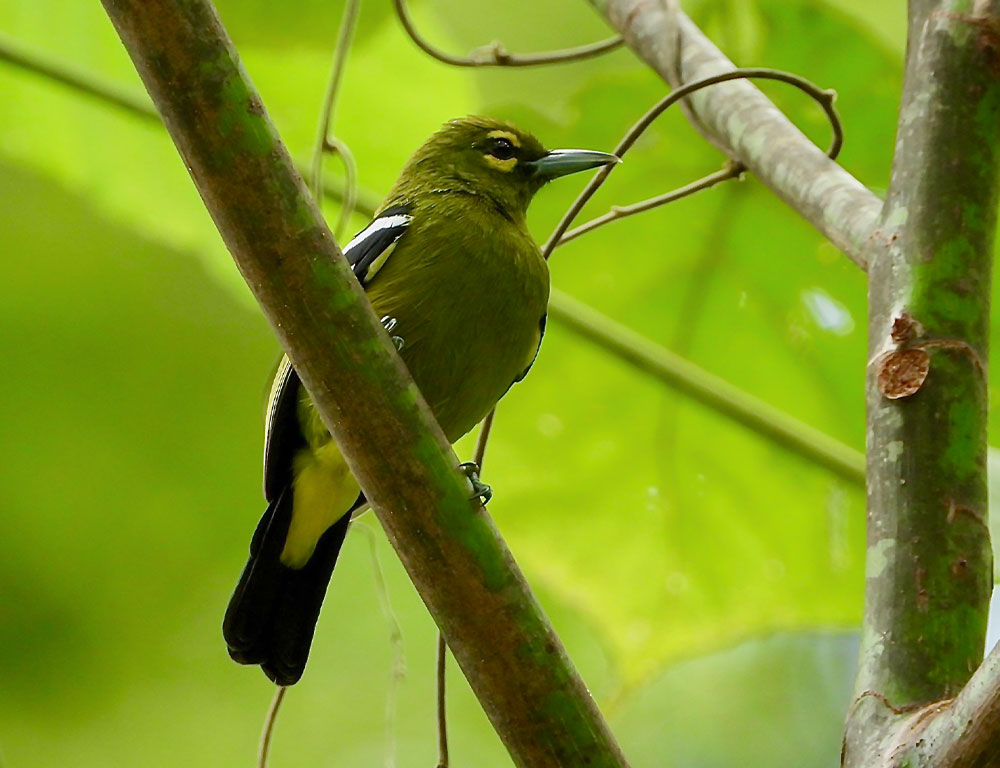
- Habitat: Green ioras primarily occur in tropical forests, including primary and secondary ones. They prefer dense vegetation and forest edges.
- Distribution: Found in parts of Southeast Asia, including the Thai-Malay Peninsula, Sumatra, and Borneo, within countries such as Thailand, Malaysia, and Indonesia.
Great Iora (Aegithina lafresnayei)
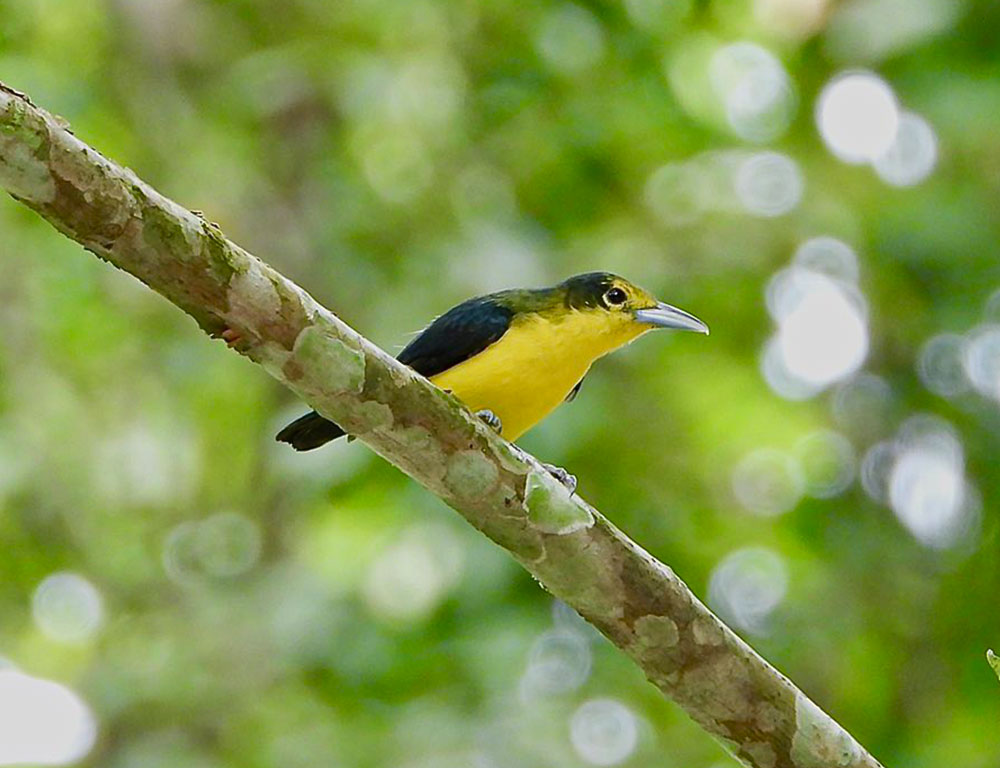
- Habitat: Great ioras inhabit various forested habitats, including tropical and subtropical forests, forest edges, and wooded areas.
- Distribution: Found in various countries across Southeast Asia, including Cambodia, China, Laos, Malaysia, Myanmar, Thailand, and Vietnam.
Physical Characteristics of Ioras
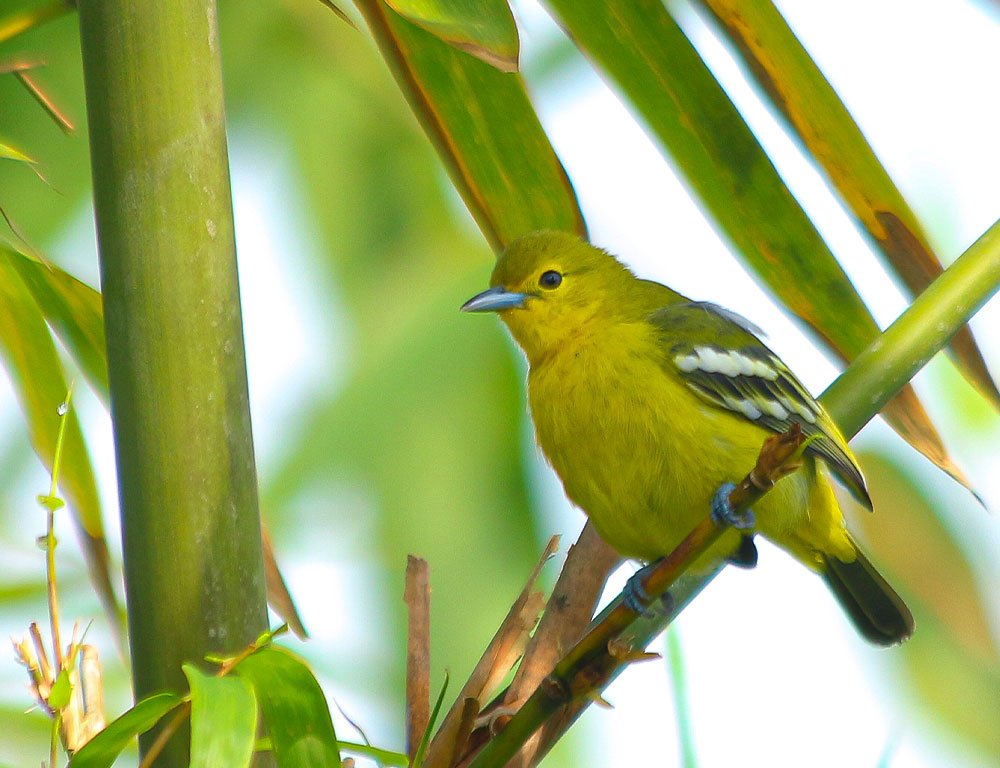
Ioras, belonging to the family Aegithinidae, exhibit several physical characteristics typical of passerine birds and some unique traits specific to their species.
Here are the main physical characteristics of ioras:
Size and Shape
Ioras are small to medium-sized passerines, with a body length typically ranging from about 11.5 to 15.5 centimeters (4.5 to 6.1 inches). They have a compact, streamlined body shape, with relatively short wings and a moderately long tail.
Plumage
The plumage of ioras is characterized by bright and vibrant colors, particularly shades of yellow, green, and olive. Males and females may have slightly different coloration, with males often exhibiting more intense and conspicuous colors, especially during the breeding season.
Bill
Ioras have a slender and slightly curved bill proportionate to their body size. The bill is adapted for catching and handling insects, with a sharp tip for probing into crevices and foliage.
Eyes
Their eyes are relatively large and positioned on the sides of their head, providing them with a wide field of vision to detect predators and locate prey while foraging in the canopy.
Legs and Feet
Ioras have thin, agile legs adapted for perching and hopping among branches and foliage. Their feet are equipped with sharp claws, aiding in gripping tree branches and maintaining balance while maneuvering in the treetops.
Sexual Dimorphism
In some species of ioras, there may be slight differences in size and plumage coloration between males and females, with males typically being slightly more extensive and brightly colored than females.
This sexual dimorphism is often more pronounced during breeding when males display vibrant colors to attract mates.
Molting
Like other birds, ioras undergo molting, in which they shed and replace their feathers. Molting allows them to maintain the integrity of their plumage and ensure optimal flight performance throughout the year.
Diet and Feeding Habits of Ioras
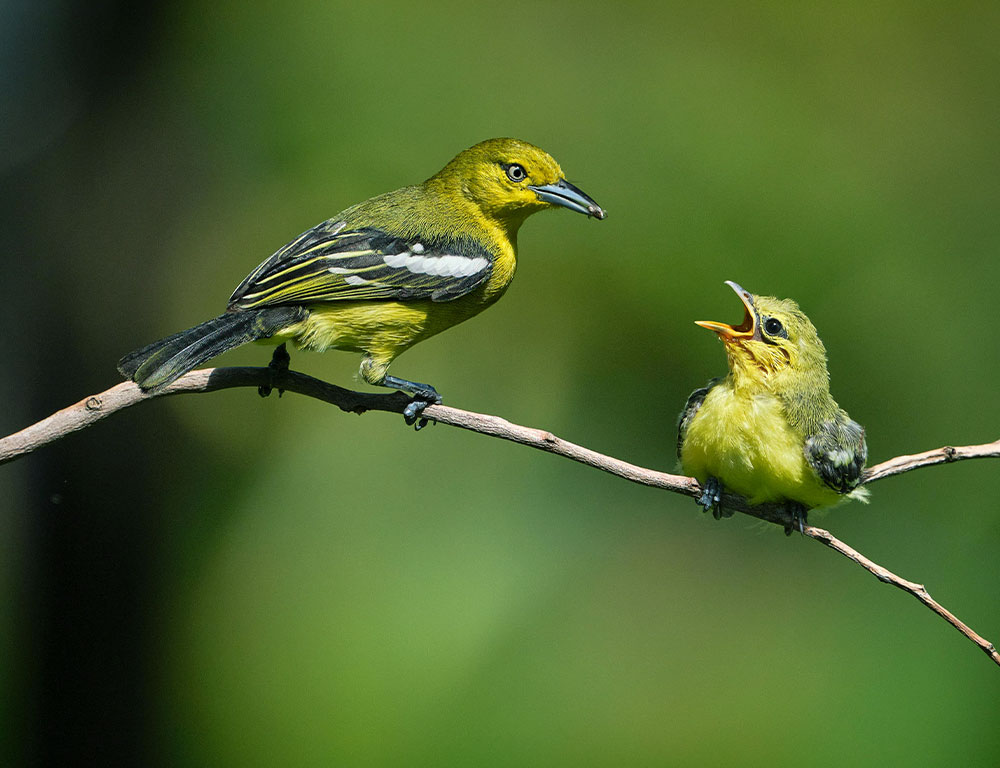
Ioras are primarily insectivorous birds, meaning they primarily feed on insects and other small invertebrates. Their diet and feeding habits are adapted to their arboreal lifestyle and are influenced by their habitat preferences.
Here’s an overview of the diet and feeding habits of ioras:
Insectivorous Diet
Ioras predominantly feed on insects, including beetles, ants, termites, caterpillars, grasshoppers, and other small arthropods. They may also consume spiders and other invertebrates found within their foraging range.
Foraging Behavior
Ioras are agile and active foragers that typically glean insects from foliage and branches in trees and shrubs. They may also sally out to catch flying insects in mid-air, employing quick aerial maneuvers to capture prey.
Arboreal Feeding
As arboreal birds, ioras spend much time foraging in the upper canopy of trees and shrubs. They use their slender bills to probe into crevices and foliage in search of hidden insects, often utilizing their agility to move swiftly through the branches.
Hunting Techniques
Ioras employ various hunting techniques depending on the prey type and food sources’ availability. These techniques may include probing, pecking, gleaning, and aerial hawking.
Dietary Supplements
While insects form the bulk of their diet, ioras may occasionally supplement their diet with other food items such as fruits and berries, particularly during scarcity or when breeding.
However, fruits and berries are not typically a significant component of their diet compared to insects.
Seasonal Variation
The diet of ioras may exhibit seasonal variation, with changes in prey availability influencing their foraging behavior and food preferences. Breeding seasons, in particular, may coincide with increased insect abundance, providing ample food resources for raising their young.
Breeding and Nesting Behavior of Ioras
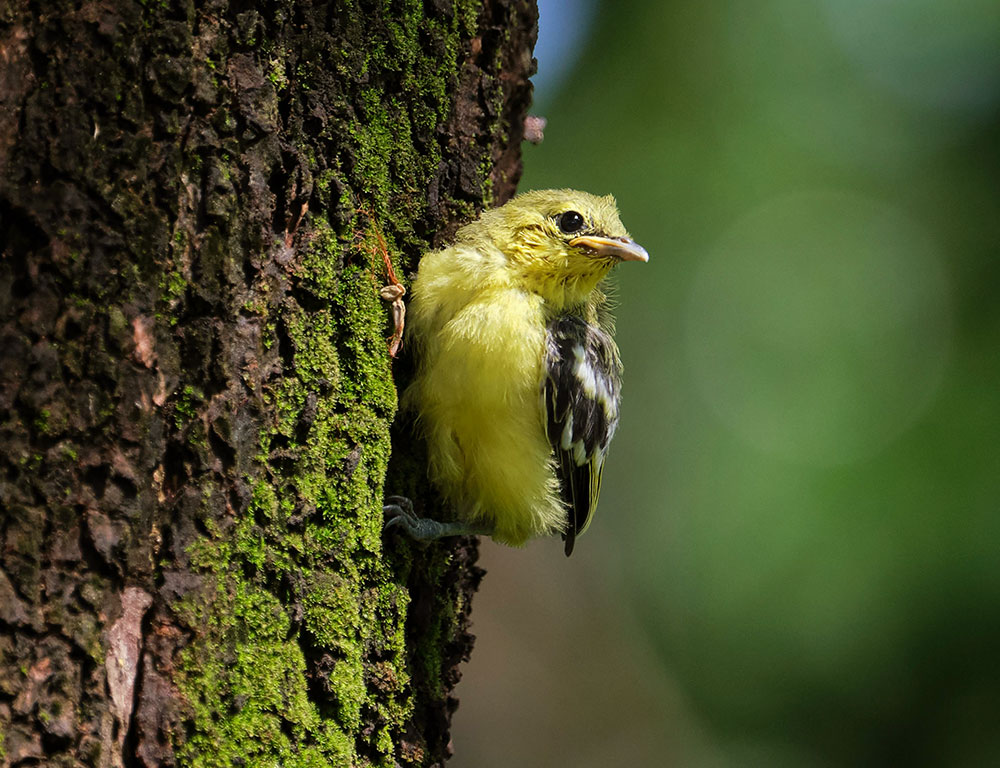
The breeding and nesting behavior of ioras are fascinating aspects of their reproductive biology, characterized by intricate courtship rituals, cooperative nesting, and parental care.
Here’s a closer look at their breeding and nesting behavior:
Pair Formation
During the breeding season, ioras form monogamous pairs. Males use courtship displays to attract females, including singing, wing-fluttering, and other visual and vocal signals.
Once pairs are formed, they engage in mutual preening and other bonding behaviors to strengthen their pair bond.
Nest Building
Both male and female ioras participate in nest building. The nest is typically cup-shaped and constructed of fine plant fibers, grasses, and other materials, intricately woven and situated in the fork of a tree branch or shrub.
The female leads the nest construction, while the male assists by providing materials and reinforcing the structure.
Egg Laying and Incubation
After the nest is completed, the female lays a clutch of eggs, typically ranging from 2 to 4 eggs, depending on the species. The eggs are usually pale-colored with speckles or blotches, providing camouflage against predators.
The female incubates the eggs for some time, during which she remains dedicated to keeping them warm and protected.
Parental Care
Once the eggs hatch, both parents feed and care for the nestlings. They take turns bringing food to the nest, primarily insects and other small invertebrates.
The young ioras overgrow, and the parents work together to meet their increasing demands for food and care.
Fledging
After some time, the nestlings develop into fledglings and are ready to leave the nest. The parents continue to provide food and guidance to the fledglings as they learn to forage and navigate their surroundings.
Fledglings gradually gain independence but may remain near their parents for some time before dispersing.
Cooperative Breeding
In some cases, ioras exhibit cooperative breeding behavior, where additional individuals, often offspring from previous broods or unrelated helpers, assist in caring for the current brood.
These helpers may aid in nest building, incubation, feeding, and protection, increasing the chances of successful breeding for the dominant pair.
Conservation Status of Ioras
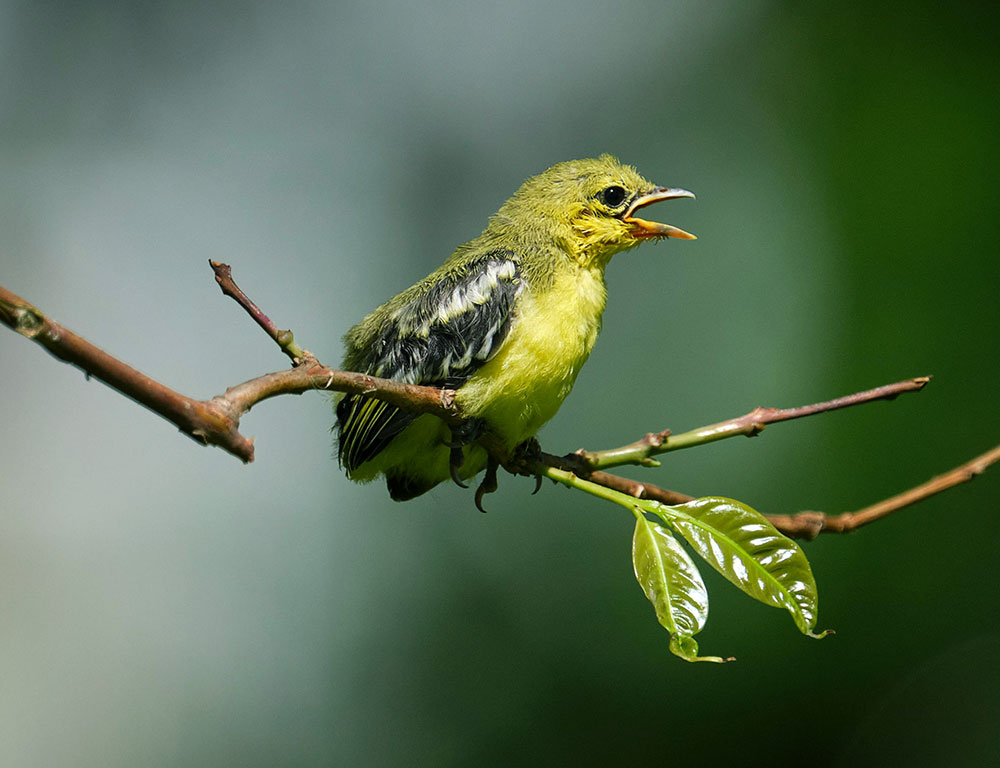
The conservation status of ioras, a group of small passerine birds found in South and Southeast Asia, varies among the species within the family Aegithinidae.
While ioras are not considered globally threatened, several factors pose potential risks to their populations, including habitat loss, degradation, fragmentation, and other human-induced pressures.
Here’s a closer look at the conservation status of ioras:
Habitat Loss and Degradation
Like many bird species, ioras are threatened by habitat loss and degradation caused by deforestation, urbanization, agricultural expansion, and other human activities.
Clearing forests reduces the availability of suitable habitats for ioras, leading to population declines and range contractions.
Fragmentation of remaining forest patches further isolates populations and reduces genetic diversity, making them more vulnerable to extinction.
Human Disturbance
Human disturbance, such as logging, mining, infrastructure development, and recreational activities, can disrupt iora habitats and breeding behaviors.
Increased human presence in forested areas may lead to nest disturbance, predation, and displacement of ioras from their preferred foraging and nesting sites.
Climate Change
Climate change poses additional threats to ioras and their habitats. Changes in temperature, precipitation patterns, and habitat suitability may alter the distribution and abundance of insect prey, impacting iora foraging success and reproductive success.
Rising temperatures and extreme weather events can also exacerbate habitat loss and fragmentation.
Invasive Species and Disease
Invasive species and diseases can negatively impact iora populations. Invasive predators like rats, cats, and snakes may prey on iora eggs, nestlings, and adults, reducing reproductive success.
Disease outbreaks, such as avian malaria and avian pox, can also pose significant threats to ioras and other bird species, particularly in fragmented habitats.
Conservation Efforts
Efforts are underway to conserve ioras and their habitats. Conservation organizations, government agencies, and local communities are implementing measures to protect and restore iora habitats, establish protected areas, and raise awareness about the importance of biodiversity conservation.
Research initiatives to understand iora ecology, behavior, and population dynamics also contribute to conservation efforts.
FAQs
What is the lifespan of ioras?
The lifespan of ioras in the wild typically ranges from 2 to 7 years, although some individuals may live longer under favorable conditions.
Do ioras migrate?
While some iora species may exhibit seasonal movements or partial migrations, many populations are sedentary and remain in their breeding areas year-round.
How do ioras communicate?
Ioras communicate through various vocalizations, including melodious songs, calls, and alarm notes, which play crucial roles in mate attraction, territory defense, and social interactions.
Are ioras kept as pets?
While ioras are not commonly kept as pets, there may be instances of captive breeding or individuals kept by aviculture enthusiasts with proper permits.
How do ioras contribute to ecosystems?
Ioras contribute to ecosystems by controlling insect populations as insectivores, aiding in pest control, and promoting ecological balance within their habitats.
To Recap
The world of ioras is a testament to the beauty and diversity of nature in South and Southeast Asia. From their vibrant plumage to melodic songs, ioras captivate our hearts and minds with their charm and elegance.
However, these enchanting birds face numerous conservation challenges, including habitat loss, human disturbance, and climate change.
We must continue to support conservation efforts to protect ioras and their habitats, ensuring that future generations can also experience the joy of encountering these remarkable creatures in the wild.
By working together to preserve biodiversity and foster habitat conservation, we can secure a brighter future for ioras and the ecosystems they inhabit.
